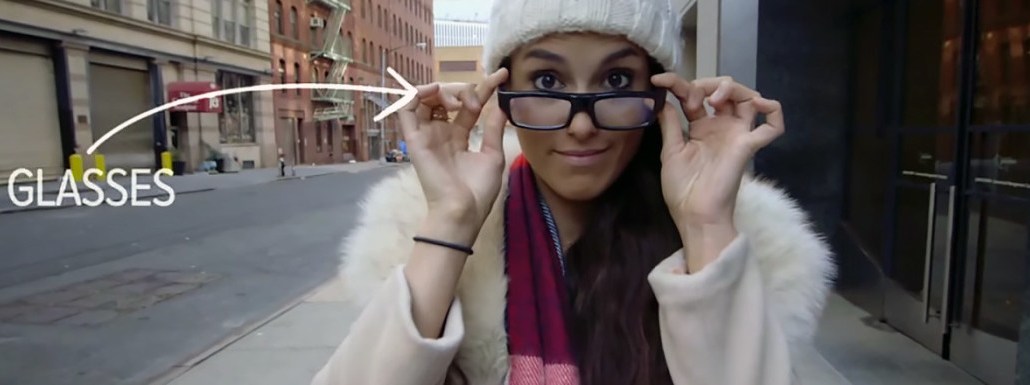Save 50% on a 3-month Digiday+ membership. Ends Dec 5.

Fast-growing millennial publisher Mic has the luxury of starting from scratch with its six-month-old video strategy. That means betting heavily on Facebook.
On Tuesday, Mic released the eighth episode of its debut video series, “Flip the Script.” Hosted by Mic senior editor Elizabeth Plank, the show tackles problematic cultural trends and stereotypes in snappy, three-to-seven-minute episodes. The latest installment centers on men who support gender equality but reject the feminist label. An earlier episode focused on the persistent lack of diversity in the fashion industry.
“Flip the Script” has been a breakout hit for Mic on Facebook, with eight episodes in two months drawing more than 33 million views on the platform, which autoplays videos in the news feed (where a “view” means at least three seconds of playtime). One episode, “Let’s Flip the Script on the R-Word,” which highlights the problematic use of the word “retarded” as an insult, has garnered 15.2 million views, 186,000 shares and 62,000 likes since its April 14 post date.
“Facebook has changed discovery and distribution of video,” said Chris Altchek, CEO of Mic. “If we were doing this three years ago, we’d have to be publishing an insane amount of volume of video just to get to discovered.”

Elite Daily, another millennial-focused publication, has posted 49 videos to Facebook this year, where it has 2 million total page likes. Yet only two of those videos have cracked a million views on the platform. Five of the eight “Flip the Script” episodes have gotten more than a million views. It’s clear the show’s topics resonate with the broader Facebook audience, outside Mic’s social footprint — and the high-production values may also help keep people watching.
“The velocity of different cuts per minute is really high,” said Altchek. “It’s on the Web, so it’s about getting peoples’ attention and holding it. It’s so different than TV.”
Ad position: web_incontent_pos1
Mic also posts “Flip the Script” to YouTube and Twitter, but it hasn’t seen nearly as much traction on either platform. Altogether, all eight videos on YouTube have just under a million aggregate views. Mic uses the YouTube player to embed “Flip the Script” episodes in articles on its site, but Mic didn’t have an existing subscriber base on YouTube, which may explain the disparity. Even so, there’s a particularly wide gap between the two platforms for Mic.
“On YouTube, the perceived wisdom is you have to be posting very frequently to maintain and grow your audience,” said Jan Dawson, chief analyst at Jackdaw Research. “On Facebook, you have your core audience, but they’re really just your mavens, the people that enable you to get your message out to the broader base of Facebook users. Facebook is more closely configured to help things go viral than YouTube is, so Facebook is a much better player [for publishers].”
Mic has a five-person video team led by Shelley Venus, a former producer at Fox and Bloomberg TV, and staffed with former Vox Media producers, who Mic hired in January. Altchek calls them “predators,” as they all produce, shoot and edit video. They’re working on four new shows, which Mic will debut later this year. Two are slated to debut this summer, one centered on travel and innovation in local communities, another on technology.
The tech show “is about how the world is getting flipped on its head, not the pixels in your new smartphone,” said Altchek.
Ad position: web_incontent_pos2
Mic has yet to monetize its video, which Altchek frames as a choice: Mic hasn’t enabled pre-roll ads on its YouTube channel, nor did it court a sponsor for its first season of “Flip the Script.”
“We wanted to have a hit, and have a hit that felt completely editorial,” he said. “But going forward, you’ll see a bunch of interesting sponsorships and new types of ad products that we’re layering into video. We’re playing with everything from post-reads to sponsor cards to different types of visual ways to recognize a sponsor.”
But even as Mic’s video team grows, starts to work with advertisers and begins to produce daily programming — a goal for 2016 — Altchek’s top priority is keeping that quality bar high.
“Digital video is flooded with garbage,” he said. “There’s a lot of publishers that just release video constantly. We’re running 180 degrees away from that. We don’t need to produce a 24-hour reel. We need the absolute best 30 to 90 minutes of video that serves millennials better than anyone else.”
More in Media

What publishers are wishing for this holiday season: End AI scraping and determine AI-powered audience value
Publishers want a fair, structured, regulated AI environment and they also want to define what the next decade of audience metrics looks like.

Digiday+ Research Subscription Index 2025: Subscription strategies from Bloomberg, The New York Times, Vox and others
Digiday’s third annual Subscription Index examines and measures publishers’ subscription strategies to identify common approaches and key tactics among Bloomberg, The New York Times, Vox and others.

From lawsuits to lobbying: How publishers are fighting AI
We may be closing out 2025, but publishers aren’t retreating from the battle of AI search — some are escalating it, and they expect the fight to stretch deep into 2026.
Ad position: web_bfu
